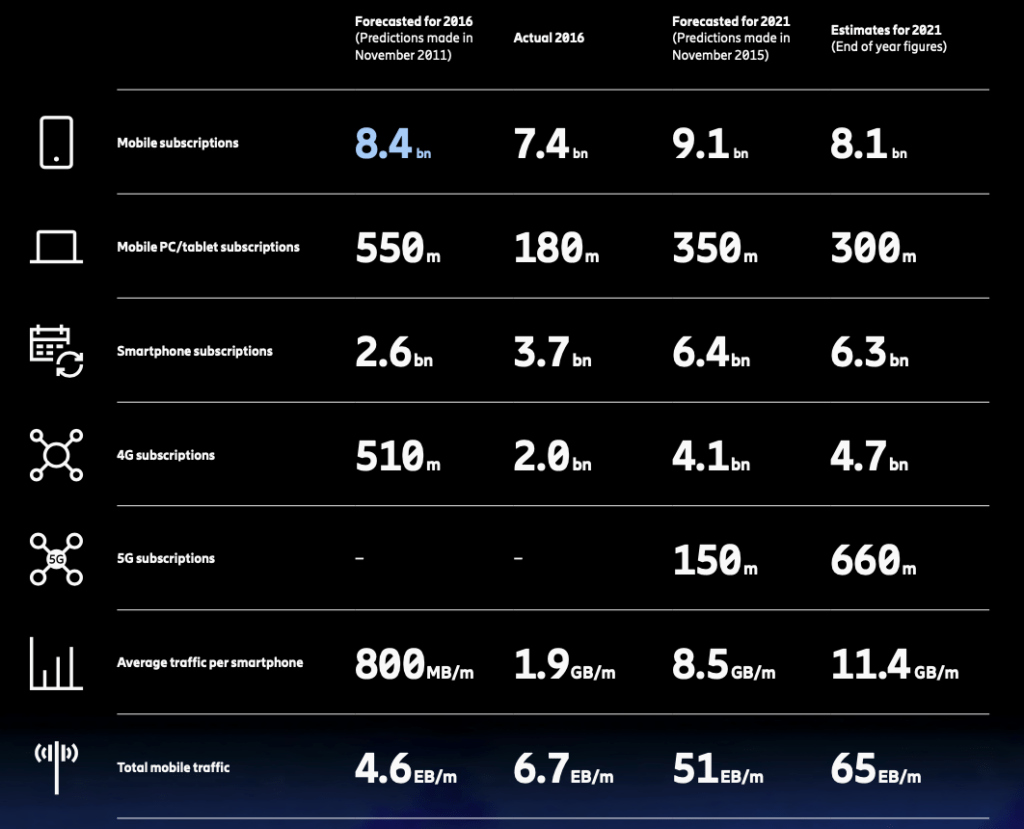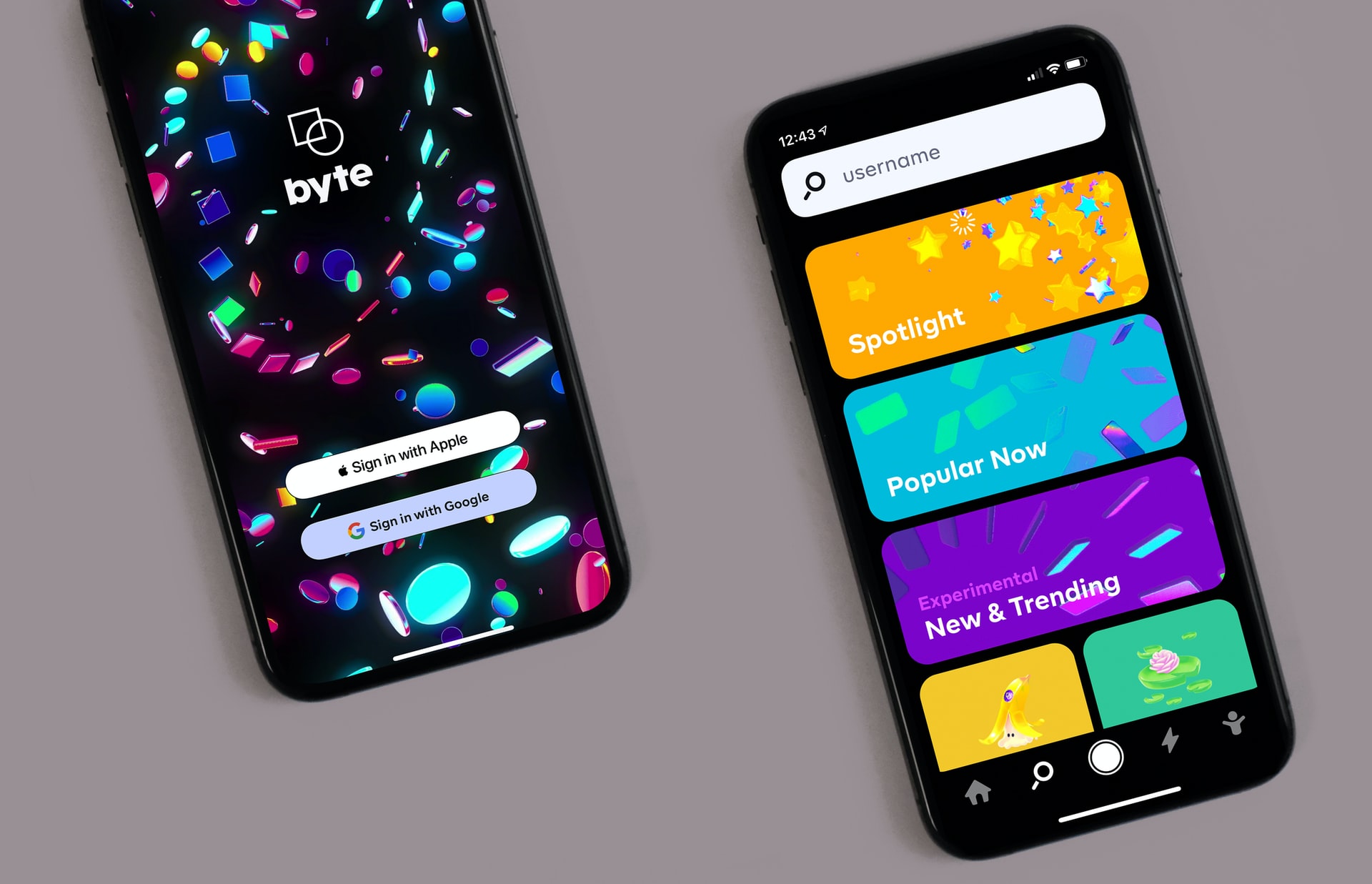Until the end of 2021 Statista noted that smartphone users have reached more than 6 billion active users, which means that more than 80% of the world’s population has used smartphones. From a business point of view this number is very interesting because it is an opportunity to add new users without time and location restrictions.


Find more statistics at Statista
Internet connection speeds and the capabilities of modern smartphones increase consumer expectations for service quality and user satisfaction. Ericsson Mobility Report reports the increase in subscribers to 4G connections has increased by about 235% since 2016, from 2 billion subscribers in 2016 to 4.7 billion subscribers by the end of 2021. This figure is even 600 million subscribers more than projected in 2015.
How much increase in internet traffic since 2016? In 2016 the average world internet traffic was around 6.7 Exabytes per month, while in 2021 it was recorded at 65 Exabytes per month. Other numbers show average traffic per smartphone is almost 2 Gigabytes per month in 2016, while in 2021 traffic per smartphone is about 11,4 Gigabytes per month, that’s more than 5 times more! That means more and more time is used by smartphone users for their daily activities.


Faster internet, increasing number of users and increasingly massive internet usage, what does that mean? The experience of using the internet with smartphones is getting better all the time, more and more people are relying on smartphones for their daily life. Imagine if your products and services become a part of their lives (smartphone users), that is what successful companies in the world have experienced and are currently experiencing.
The decision to deliver mobile applications to consumers is usually taken to be able to attract new customers and retain old customers. However, many companies are not aware that this goal can not be achieved if their mobile applications fail to be accepted by consumers. The following are some things to consider in building a mobile application.
Know Your Customers, Deeper
The most common mistake when it comes to building mobile apps is companies rushing to build apps. Their focus is to build applications that look fancy, attractive and exclusive.
As with anything we do as entrepreneurs, researching how our businesses impact and influence our customers and our markets – and our world – is critical to building something of value as a business
Michael Gerber
Know your consumer demographics. Do not let the mobile application fail to convert conventional services into good service innovations, especially for loyal consumers. Mobile applications that look exclusive may be suitable for capturing new users, but still tailor your mobile application user experience to the target market for your products and services.
Mobile Apps Should Solve Real Problems With Your Service
Having a new and innovative business model idea is a good asset to translate into a mobile application, but it will only produce an insoluble output if it is not executed properly. The worst thing that can happen is that your customers refuse to use your mobile application because it doesn’t make it easier for them to use your service.
One thing that often escapes management’s view is the feasibility factor of the business model that is applied to mobile applications.
Perform an in-depth and comprehensive feasibility analysis, aligned with the business model and company resources. This is important to ensure that your application is built in a cost efficient manner and the end goal is that the active users of your application remain stable and continue to increase.
Build “Lean” Mobile Applications
Consumers have simple desires, but you and management have a very extraordinary idea. You provide various features in mobile applications with the hope that consumers will see this as the achievement of your company’s brilliant idea. This isn’t a mistake, but constantly adding features that your customers don’t need will lead in that direction.
Mobile applications that have too many features will run slowly and are less responsive, large file sizes and sometimes will drain the device battery quickly. Of course, this is not liked by consumers. For your company, building a mobile application with these characters will cost you a lot of time and money.
Building a mobile application also requires a way of thinking from the user’s point of view. One of the decisions that must be taken when building a mobile application is the selection of the mobile application platform or technology that will be used. One of the most difficult choices to make is whether the application that is built must be a native application or just use PWA only? The decisions taken will affect the determination of requirements, development costs and ultimately the quality of the user experience.


Always Align The Initial Vision And Target Audience
The most confusing and complicated thing when a mobile application has been built is the number of downloads in the app store that does not match expectations even though your mobile application is very attractive and feature-rich. One of the reasons could be the audience’s incompatibility with the initial vision of the application.
For example, the initial goal of building your mobile application is to provide the most popular and always updated news, but you market your application with blogging capabilities to consumers. You should focus on providing news, at the same time you should provide instruments and tools that make it easier for consumers so that your consumer writings can become popular writings among readers.
In concise, first, identify the right audience then try to stay on the audience and keep crafting features according to your relevant audience. Most of the times app owners and developers forget what their requirements and vision for the app at the initial stage are. They completely mislead the from the vision while experimenting on the new features and design. To avoid this mistake, try to keep asking yourself why I choose to design this app, how I can do better with resources and all why queries.
Are All the Considerations Above Sufficient?
Maintaining and improving your business by changing the way you deliver products and services using mobile apps is a job that takes time, there is no instant way to become a market leader in this internet age. Your mobile application may feel empty at first, the number of downloads has not been targeted or even your old customers need time to adapt to changes in the way your service works.
The outline of this article tells about how you build a mobile application that can be centered on consumer needs but without changing the vision and mission of your company. In concise, create an attractive mobile application that can resolve problems of targeting the audience.
What you need is to focus on your business strategy. Build your mobile application with a partner who can listen to your entire vision but can always provide good advice and insight for the development of your business. Meta Lab is ready to help and accompany you to enter digital transformation steps safely, effectively and efficiently.




